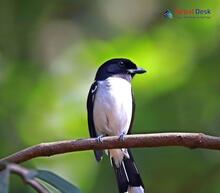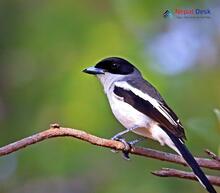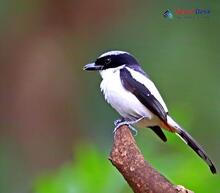Nestled in the heart of the Himalayas, Nepal is a country blessed with an astounding array of biodiversity. Among the diverse flora and fauna that thrive in this picturesque landscape, one fascinating genus captures the attention of nature enthusiasts and researchers alike - the Hemipus genus. Here, we will be delving into a comprehensive profile of these distinctive birds and their unique presence in Nepal.
Understanding the Hemipus Genus
The Hemipus genus is a group of birds that belong to the family Campephagidae, commonly known as cuckooshrikes. There are two notable species within this genus: the Black-winged Flycatcher-Shrike (Hemipus hirundinaceus) and the Bar-winged Flycatcher-Shrike (Hemipus picatus). These charismatic birds are characterized by their striking plumage, agile flight, and remarkable insect-hunting abilities.
Distribution and Habitat
While both species of Hemipus have similar habitat preferences, their respective distribution ranges differ. The Black-winged Flycatcher-Shrike can be found in parts of India, Bangladesh, Myanmar, Nepal, Bhutan, and southern China. In contrast, the Bar-winged Flycatcher-Shrike's distribution extends from India to Java and Bali in Indonesia.
In Nepal specifically, both species are spotted regularly in forested areas where they inhabit mixed deciduous and evergreen forests as well as secondary-growth habitats. They can typically be found between 200-2200 meters above sea level but are occasionally seen at lower altitudes in some regions.
Behavior and Diet
As their name suggests, flycatcher shrikes predominantly feed on insects such as small beetles, caterpillars, ants, and flies caught during skillful aerial pursuits. Exhibiting an intriguing blend of flycatcher and shrike-like behaviors, Hemipus genus birds are known to perch on branches and suddenly dart out to snatch their prey mid-flight, before returning to their perch to devour it.
Hemipus birds are found either solitarily or in small groups, where they can be observed chattering incessantly throughout the day. Their vocalizations consist of a variety of calls, including shrill whistles, sharp notes, and melodic tunes that add a sense of charm to their presence in the forests of Nepal.
Conservation Status
Both species of Hemipus are currently classified as 'Least Concern' by the IUCN Red List due to their relatively wide distribution ranges and seemingly stable populations. Nevertheless, ongoing habitat destruction poses a potential threat to these captivating birds in certain parts of their range. Therefore, conservation measures that preserve key habitats in places like Nepal will play a crucial role in ensuring the survival and flourishing of the Hemipus genus for future generations to appreciate.
In conclusion, the Hemipus genus provides a fascinating insight into the rich biodiversity found within Nepal's verdant landscapes. These captivating flycatcher-shrikes not only contribute to the enchanting charm of this beautiful country but also serve as an emblem of its remarkable natural heritage.




